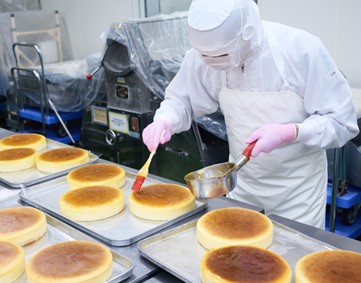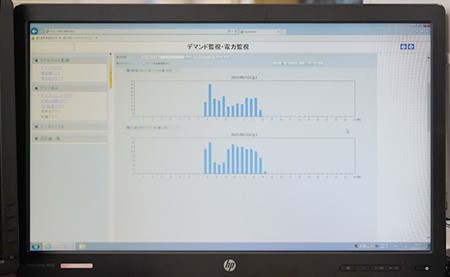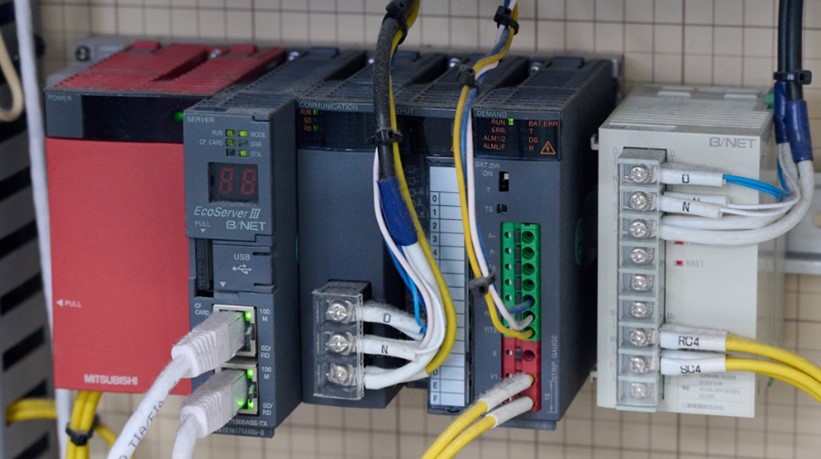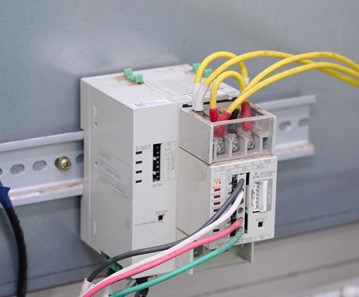Famiel Confectionery Co., Ltd. in Japan has implemented energy management and demand monitoring at its head factory after introducing Mitsubishi Electric's energy saving data collection server "EcoWebServerIII". In addition to allowing Famiel to lower the contracted power supply level, the expansion of energy saving activities through real time visualisation of electricity, gas, and water consumption led to a significant reduction of the overall utility costs – a total of some 10 million yen over 5 years.
Founded in 1976 as a commercial frozen cake manufacturer based in Yokohama, Japan, Famiel Confectionery manufactures and sells cakes and other western confectionery. In addition to cakes sold under its own brand, the company makes a variety of frozen cakes at its factory and sells them to hotels and restaurants nationwide in Japan. In 2017, the company moved to Yokosuka, a city within the same Kanagawa Prefecture, where the current headquarter factory is located and became the hub of its business expansion.

Famiel Confectionery sells a variety of cakes to hotels and restaurants nationwide in Japan. The photo above shows the process of spreading jam on baked cheesecakes.
Cake manufacturing uses a large amount of electricity for the ovens to bake the cakes. “The three ovens in our factory account for about a quarter of the overall electricity we use. Power consumption reaches its peak when these ovens are all turned on, and our contract power is determined based on this peak.,” says Hideyuki Moriya, General Manager of the Production Department. Therefore, since 2015, when the headquarters was in Yokohama, the company has been working on visualising power consumption by installing Mitsubishi Electric's "EcoMonitor" energy measurement units on ovens and other key equipment.
“When we visualised our energy consumption, I was able to understand a lot of things. It was not only about how much electricity the ovens were using, but I also learned that the machine we use to wrap the cake in film did not use as much electricity as I originally thought it would. When such data was made available to the factory floor, it attracted the interest of our workers and made them think about how they could save more energy.,” says Moriya. Therefore, when Famiel moved their factory to the current location in 2017, they not only reinstalled the visualisation system, but also expanded the number of items they measured the energy use on. They also utilised “EcoWebServerIII”, an energy saving data collection server, and introduced energy demand monitoring and management throughout the factory.

This screen for monitoring the real-time electricity demand helps to efficiently control power consumption in the factory to avoid exceeding the contract demand level. (Photo: Mitsubishi)
“I was confident about the ROI”
In the new factory, Famiel more than doubled the number of machines they monitored, and decided to additionally measure the electricity used for air conditioning, as well as how much water and gas the factory consumed. Explaining this decision, Hideyuki Moriya said, “In addition to the cost needed to reinstall the system from the old factory, we had to invest nearly twice as much to upgrade the system. I was, however, quite confident that we would be able to get a return on investment (ROI) since we had already saved more than we spent for our initial investment.”
The energy demand monitoring system for the new factory visualises how much energy each item or air conditioner consumes. The key feature of this system is that it issues alerts in three stages according to the level of demand to avoid total consumption from exceeding the contracted power level. If an alert is issued at the third stage, which means demand is nearing the limit, their staff on site will turn off some machines to keep the demand within the limit.
Furthermore, to automatically control the air conditioning system based on the energy demand, Famiel linked the air conditioning system to the energy demand monitoring system via Mitsubishi Electric's integrated air conditioning management interface "AE-200J".
“I adjust the settings according to the season and the weather. We cannot get the full effect with the same settings all year round. To save energy, it is necessary to make full use of the system we have.,” says Moriya.
In addition to efficiently controlling the energy demand at the new factory, Famiel Confectionery is also promoting activities to reduce demand over the long term with their main focus being the ovens. At the factory, electricity demand spikes when the three ovens are turned on at the start of work in the morning. The ovens continue to run after that, but once they are warmed up, they use less power for continuous operation. The key point in lowering the demand was to suppress the peak in demand right after the start of the ovens.
The contract power level is determined based on the demand measured within each 30-minute period, so if Famiel wanted to lower the contract power, they had to make sure power consumption did not concentrate in one of these periods. Therefore, Famiel Confectionery changed the sequence in which they turn on the three ovens so that, instead of turning them on all at once, they decided to turn on the second oven 30 minutes after the first, and the third oven 30 minutes after that.
“After we start heating the first oven, it takes about 30 minutes to reach the required temperature. The change in the baking process therefore had a great impact on the preceding and succeeding processes so we had to adjust each process, including how we prepare the cake dough. However, the significant fact was the total daily working hours did not change.,” explained Moriya.
By optimising the processes based on data from the demand monitoring system, it was possible to balance the demand and reduce the contract power without affecting work hours or product quality.


EcoWebServerIII" (top image) and "EcoMonitorPlus" (bottom image) were installed for demand monitoring.
Further energy savings achieved by measuring additional data
By deciding to also visualise water and gas consumption data at the new factory, Famiel Confectionery could further reduce costs. Moriya explained, “For example, in a device that sterilises equipment with boiling water, the water is always kept at a boiling state. However, in reality, the time we need for sterilisation is limited, so it is not necessary to keep the water boiling all the time. If we efficiently control the device so that water is boiled in time for the sterilisation process, then it will lead to saving energy. By visualising the real-time consumption of water and gas, we were able to identify where there was room for improvement.”
Monitoring each energy consumption point and its associated demand led to energy saving activities that are certainly producing concrete results. For example, electricity consumption was reduced by 6.3% year on year in fiscal 2021 compared to fiscal 2017 when the company relocated their factory. Along with this, demand decreased by 3.7% and the unit cost of the electricity was reduced due to the reduction of contracted power. In addition, the effects from visualising gas and water consumption were particularly large, achieving reductions in volume by 38.4% and 25.1% respectively during the same period. As a result of these efforts, overall costs reduced by nearly 10 million yen over the five year period, far exceeding the cost that was invested for the monitoring system.
Moriya added, “Currently, I am the only one who can set alerts as the administrator, but going forward, if our supervisors can also take on this role, I believe we can get additional energy saving benefits, even when I am away.” Famiel Confectionery also has plans to increase the number of items they monitor, increasing the visualisation of detailed data, to get a wider understanding of their energy use.














